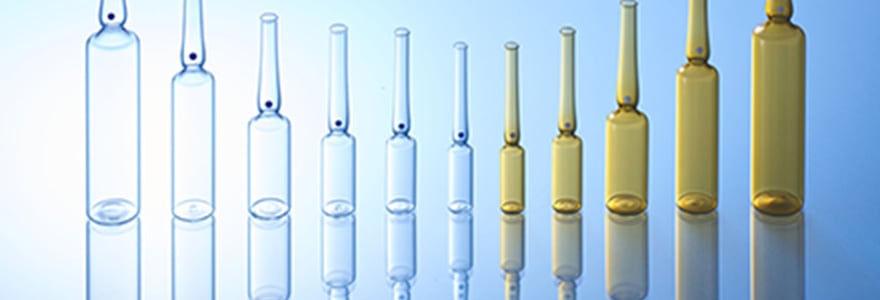
Glass ampoules are becoming increasingly popular in the pharmaceutical industry for a number of reasons. They offer a number of advantages over other types of packaging, including better barrier properties, higher strength and durability, and greater compatibility with a wide range of materials. Glass ampoules are also easier to recycle than other types of packaging, making them a more sustainable option for the pharmaceutical industry.
Pharmaceutical Glass Ampoules Market: Growth Drivers
The global market for pharmaceutical glass ampoules is growing at a significant pace owing to the rising demand for injectable drugs and vaccines. The pharmaceutical industry is shifting its focus from small-molecule drugs to large-molecule drugs, which are more effective and have fewer side effects. This has resulted in the increased use of glass ampoules for the packaging of injectable drugs and vaccines.
Glass ampoules are made of borosilicate glass, which is a type of glass that is highly resistant to thermal and chemical shocks. Borosilicate glass ampoules are ideal for the packaging of injectable drugs and vaccines as they can withstand the high temperatures involved in the sterilization process. Glass ampoules are also airtight and leak-proof, which ensures the safety and efficacy of the drugs and vaccines stored in them.
The market for pharmaceutical glass ampoules supplier is expected to grow at a rapid pace in the coming years owing to the increasing demand for injectable drugs and vaccines.
Pharmaceutical Glass Ampoules Market: Segmentation
The global market for pharmaceutical glass ampoules is expected to grow at a CAGR of 6.1% during the forecast period of 2019-2027. The market is primarily driven by the increasing demand for injectable drugs and the rising preference for glass ampoules over plastic ampoules.
Glass ampoules are made of borosilicate glass, which is a type of glass that is resistant to thermal and chemical changes. This makes them ideal for storing sensitive drugs, such as vaccines and injectable drugs. Glass ampoules are also easy to sterilize and have a long shelf life.
The increasing demand for injectable drugs is one of the major factors driving the growth of the pharmaceutical glass ampoules market. Injectable drugs are preferred over oral drugs as they are more effective and have a faster onset of action. They are also less likely to be affected by digestive enzymes, which makes them ideal for patients who have difficulty swallowing or who are unable to absorb oral medications.
The rising preference for glass ampoules over plastic ampoules is another factor driving the growth of the pharmaceutical glass ampoules market. Glass ampoules are preferred over plastic ampoules as they are more resistant to breakage and are less likely to leach chemicals into the drugs. Glass ampoules are also easier to recycle than plastic ampoules.
The major restraint for the growth of the pharmaceutical glass ampoules market is the high cost of manufacturing glass ampoules. Glass ampoules are more expensive to manufacture than plastic ampoules, which is a major concern for many pharmaceutical companies.
The major opportunity for the growth of the pharmaceutical glass ampoules market is the increasing demand for biologics. Biologics are large, complex molecules that are difficult to manufacture using traditional methods. Glass ampoules are the preferred packaging material for biologics as they provide a sterile environment and protect the molecules from degradation.
The major players in the pharmaceutical glass ampoules market are Gerresheimer AG, Schott AG, Stevanato Group, Nipro Corporation, and Abbott Laboratories.
Cosmetic Ampoules Market
Ampoules made of glass are becoming increasingly popular in the pharmaceutical industry due to their many benefits. Glass ampoules are airtight, which prevents oxidation and contamination of the contents. They are also impermeable to light, which helps to preserve the potency of the contents. In addition, glass ampoules are break resistant and can be sterilized, making them ideal for use in the pharmaceutical industry.
Single-Use Ampoules Market
As the demand for pharmaceuticals has increased over the years, so has the need for better packaging. Glass ampoules are becoming increasingly popular in the pharmaceutical industry because they offer a number of advantages over other packaging options. Glass is a highly inert material, meaning it won’t interact with the drugs it contains. This is important because it helps to ensure the drugs remain potent and safe. Ampoules are also easy to seal and can be designed to be tamper-proof, ensuring that patients receive the correct dosage.
Ampoules and Syringes Market
Glass ampoules are becoming increasingly popular in the pharmaceutical industry due to their many benefits. Glass is a sterile material that does not interact with drugs, making it ideal for storing and transporting pharmaceuticals. Ampoules are also easy to fill and seal, ensuring that medications are not contaminated. In addition, glass ampoules can be easily recycled, which is important for sustainability.
Plastic Ampoules Market
The global plastic ampoules market was valued at USD 1.02 billion in 2018 and is expected to grow at a CAGR of 4.8% from 2019 to 2025. Plastic ampoules are becoming increasingly popular in the pharmaceutical industry due to their light weight, shatter-resistance, and ease of disposal. Glass ampoules are also popular, but are more fragile and require more careful handling.
Glass ampoules are becoming increasingly popular in the pharmaceutical industry for a number of reasons. They provide an excellent barrier to oxygen and other gases, they are easy to sterilize, and they can be used to store a wide variety of liquids and powders. In addition, glass ampoules are relatively inexpensive to produce, and they offer a wide range of sizes and shapes to choose from.